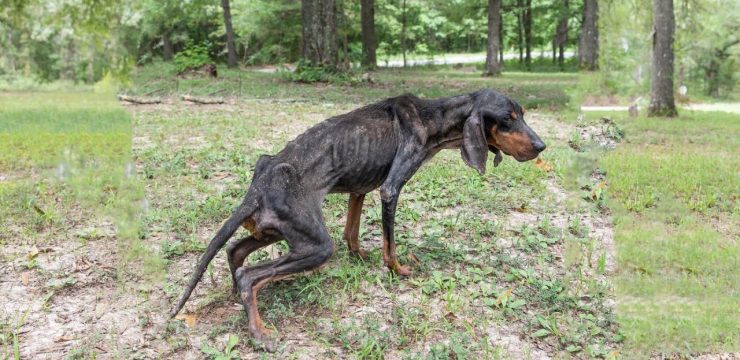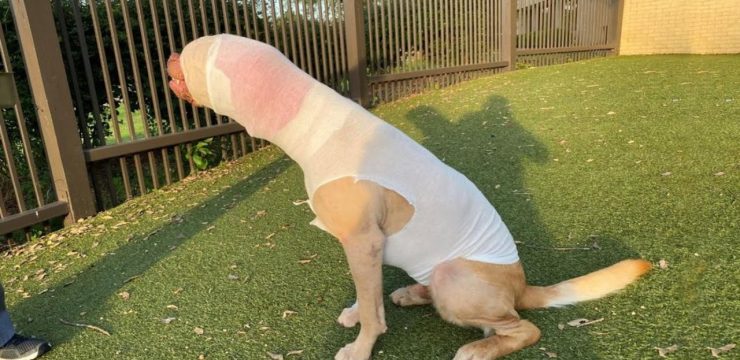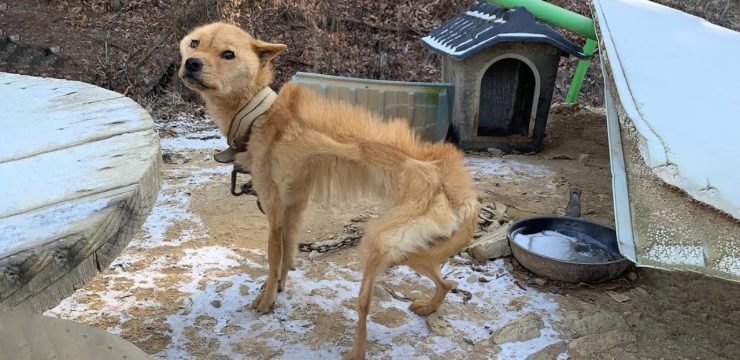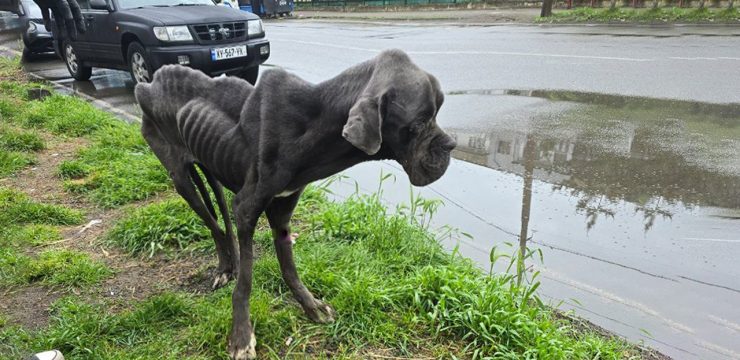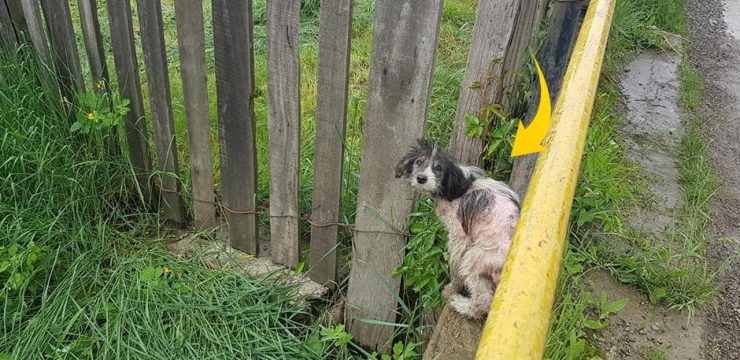We received an urgent call from our logistics team about a dog they had stumbled upon, and without hesitation, we dropped everything and rushed to the location. At that point, we had no idea what condition the animal would be in—or what kind of scene we were walking into. But our instincts told us it was serious, and every second could make a difference.
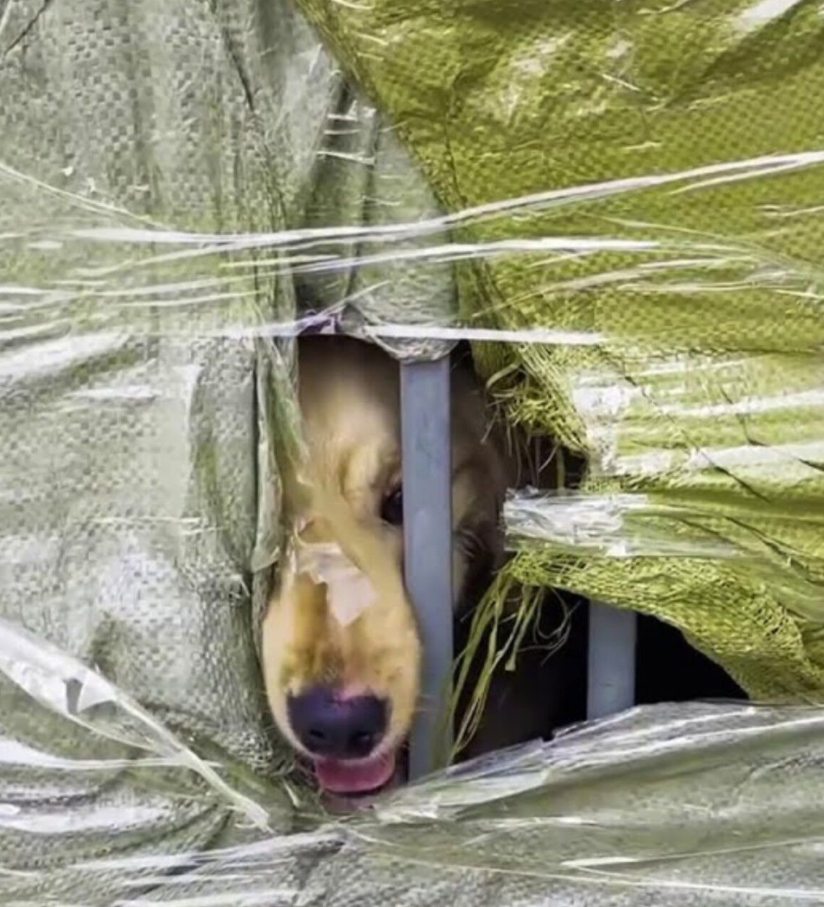
When we arrived, our hearts sank. There, in the blazing sun, was a small golden retriever, cramped inside a cage. The sight was gut-wrenching. The poor dog was panting heavily, its tongue hanging out of its mouth, eyes glazed over with exhaustion. Its fur was matted and damp with sweat, its small frame curled in on itself as if it had given up. The intense heat had clearly taken its toll, and it was obvious the dog had been left in this state for some time. Every detail pointed to deliberate neglect. The cage wasn’t just closed—it was tightly bound with layers of heavy-duty tape, sealing the dog in without food, water, or any chance of escape. This wasn’t carelessness; it was cruelty.
Immediately, memories of a past rescue rushed back—another dog abandoned in similar circumstances, caged and left in the open to suffer. The parallels were painful. But this moment wasn’t about reflecting on past heartbreaks—it was about saving the life in front of us.
With great care, we began cutting through the tape, working as quickly and gently as possible. The dog didn’t resist. It was too tired, too broken. Yet in its weary eyes, there was something else—a trace of recognition, a faint flicker of hope. As we lifted it from the cage, its body was limp, but its gaze clung to us, as if it understood we were there to help. That single look, soft and searching, was enough to push us forward with even more urgency.
We laid the dog down on a blanket in the shade and began offering small sips of cool water. It drank slowly, cautiously, its body still trembling from the ordeal. We moved carefully, speaking in calm, reassuring tones, trying to soothe its frayed nerves. Despite everything it had been through, it didn’t growl or snap—it simply watched us, as if waiting to see what came next.
Once it was stabilized, we transported the dog to our veterinary team for a full examination. The fear of underlying illness loomed large. Conditions like parvovirus or canine distemper could be deadly, especially for a dog already weakened by stress and dehydration. But, against all odds, the tests came back clean. No infections. No critical issues. Physically, the dog had made it through—emotionally, the road ahead would be harder.
Still, the relief was immense. We named her Sunny, a small nod to the scorching heat she had survived and the bright new beginning we hoped to give her. From the moment we brought her to our shelter, her gentle nature began to shine through. Though she was timid and hesitant, there was no aggression. She watched the other dogs with curiosity and slowly began to inch toward them, tail low but wagging—just a little.
That first wag. It wasn’t much—barely noticeable, really—but it brought tears to our eyes. It wasn’t just a movement; it was a message. In that hesitant swish of her tail, Sunny was telling us she hadn’t given up. She was still scared, still unsure, but she was willing to try. Willing to trust. That tiny motion carried more weight than words ever could. It was a reminder of how deeply animals feel, how much they endure, and how even in their quietest gestures, they can speak volumes.
As we watched her begin to engage with the world again, every small step felt like a victory. She approached the food bowl without needing coaxing. She sniffed at a toy tentatively. She even let one of our volunteers brush her gently without pulling away. These were the moments that made it all worthwhile.
The ride back to the shelter had been peaceful. Sunny lay curled up in a soft crate, eyes finally closing in rest, knowing—perhaps for the first time in a long while—that she was safe. There was no telling what her past held, or how many nights she’d spent alone, afraid, wondering if someone would ever come. But what mattered now was the present, and the promise of a better future.
When we settled her into her new space at the shelter—a quiet, shaded area with a cozy bed, fresh food, and cool water—she seemed to relax a little more. She didn’t jump or bark. She simply lay down, curling into a small ball, her breathing calm and steady. And for the first time, we saw her sleep—not the restless, fearful kind of sleep that comes from exhaustion, but real, peaceful sleep.
That moment was powerful. After all the suffering, all the fear, she still had the strength to keep going. There was no bitterness in her eyes, no mistrust in her body language. Just a quiet resolve. She hadn’t just survived—she had endured. She hadn’t let the cruelty of one person define her view of the world. Instead, she was beginning to open herself to the idea that maybe, just maybe, things could be different.
Sunny’s story is more than just a tale of rescue. It’s a reflection of resilience, of how even the smallest light can shine through the darkest times. It’s a testament to the strength of animals, their capacity to forgive, and the life-changing power of compassion. While we don’t yet know where Sunny’s journey will take her, one thing is certain: she will never again be alone, never again be left behind.
She is safe now. She is loved. And she is proof that hope, no matter how faint, can survive anything.
